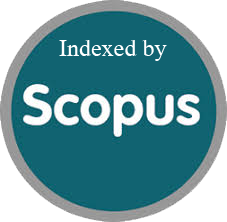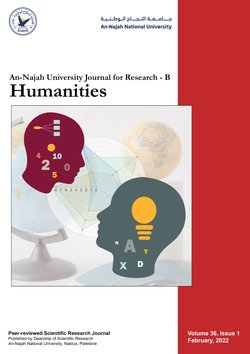Classroom Discipline Modes Practices as Perceived by Elementary and Secondary School Teachers and Students in Palestine
Authors:
Article info
2000-07-04
2001-03-13
2001-03-13
229 - 276
Keywords
Abstract
The aim of this study was to investigate perceptions of teachers and students towards classroom discipline modes in Palestine. It also aimed at investigating effects of variables of students’ gender, educational stage, and major, other variables related to teachers were also examined, and include: gender, scientific degree, and educational stage on these modes. To achieve these aims, the study conducted on a sample of (566) students and (206) teachers. The results of this study, reveals that the method of preventive counseling mode was seen by both teachers and students as the dominant method in schools, whereas, the method of autocratic punishing mode was appear clearly in elementary stage male schools. In addition, the study shows that (M.A) teachers used the method of autocratic punishing mode more frequently than other teachers. Furthermore, significant differences at (α = 0.05) was found in major variable in favor of literary students, while no significant differences were found at ( α = 0.05) in teachers’ perceptions towards classroom discipline modes in accordance with educational stage variable. In general, the results of the study indicates that teachers were more efficient than students in explaining the classroom discipline modes that practiced in schools.
Al-Hilo, G. (2001). Classroom Discipline Modes Practices as Perceived by Elementary and Secondary School Teachers and Students in Palestine. An-Najah University Journal for Research - B (Humanities), 15(1), 229–276. https://doi.org/10.35552/0247-015-001-007
[1]G. Al-Hilo, “Classroom Discipline Modes Practices as Perceived by Elementary and Secondary School Teachers and Students in Palestine,” An-Najah University Journal for Research - B (Humanities), vol. 15, no. 1, pp. 229–276, Jan. 2001, doi: 10.35552/0247-015-001-007.
Al-Hilo, Ghassan. “Classroom Discipline Modes Practices as Perceived by Elementary and Secondary School Teachers and Students in Palestine.” An-Najah University Journal for Research - B (Humanities), vol. 15, no. 1, Jan. 2001, pp. 229–76. Crossref, https://doi.org/10.35552/0247-015-001-007.
1.Al-Hilo G. Classroom Discipline Modes Practices as Perceived by Elementary and Secondary School Teachers and Students in Palestine. An-Najah University Journal for Research - B (Humanities) [Internet]. 2001 Jan;15(1):229–76. Available from: http://dx.doi.org/10.35552/0247-015-001-007
Al-Hilo, Ghassan. “Classroom Discipline Modes Practices as Perceived by Elementary and Secondary School Teachers and Students in Palestine.” An-Najah University Journal for Research - B (Humanities) 15, no. 1 (January 2001): 229–76. https://doi.org/10.35552/0247-015-001-007.
تصورات معلمي المدارس الحكومية الأساسية والثانوية وطلبتها نحو أنماط الضبط الصفي في شمال فلسطين
المؤلفون:
معلومات المقال
2000-07-04
2001-03-13
2001-03-13
229 - 276
الكلمات الإفتتاحية
الملخص
هدفت الدراسة إلى التعرف على تصورات معلمي المدارس الأساسية والثانوية وطلبتها نحو أنماط الضبط الصفي في فلسطين، بالإضافة التعرف إلى أثر متغيرات الجنس، والمرحلة الدراسية، والتخصص للطالب، ومتغيرات الجنس، والشهادة العلمية، والمرحلة الدراسية التي يدرس فيها المعلم على هذه الأنماط. ولتحقيق ذلك أجريت الدراسة على عينة قوامها (566) طالباً وطالبة، و(206) معلماً ومعلمة. وقد أظهرت نتائج الدراسة أن نمط الأسلوب الوقائي الإرشادي كان الأسلوب السائد في المدارس من وجهة نظر كل المعلمين والطلبة، كما وأظهرت النتائج أن نمط الأسلوب العقابي التسلطي يظهر بوضوح في مدارس الذكور، وخاصة مدارس المرحلة الأساسية، ولدى المعلمين الذين يحملون درجة الماجستير، بالإضافة إلى ذلك أظهرت نتائج الدراسة أن طلبة التخصص الأدبي كانوا يحبذون نمط الأسلوب الوقائي الإرشادي, ولم تظهر الدراسة فروقاً ذات دلالة إحصائية عند مستوى (α = 0.05) في تصورات المعلمين نحو أنماط الضبط الصفي تبعاً لمتغير المرحلة الدراسية لديهم. وبشكل عام بينت نتائج الدراسة أن المعلمين هم الأكفأ في تفسير أنماط الضبط الصفي التي تستخدم بالمدارس مقارنة بالطلبة.
Al-Hilo, G. (2001). Classroom Discipline Modes Practices as Perceived by Elementary and Secondary School Teachers and Students in Palestine. An-Najah University Journal for Research - B (Humanities), 15(1), 229–276. https://doi.org/10.35552/0247-015-001-007
[1]G. Al-Hilo, “Classroom Discipline Modes Practices as Perceived by Elementary and Secondary School Teachers and Students in Palestine,” An-Najah University Journal for Research - B (Humanities), vol. 15, no. 1, pp. 229–276, Jan. 2001, doi: 10.35552/0247-015-001-007.
Al-Hilo, Ghassan. “Classroom Discipline Modes Practices as Perceived by Elementary and Secondary School Teachers and Students in Palestine.” An-Najah University Journal for Research - B (Humanities), vol. 15, no. 1, Jan. 2001, pp. 229–76. Crossref, https://doi.org/10.35552/0247-015-001-007.
1.Al-Hilo G. Classroom Discipline Modes Practices as Perceived by Elementary and Secondary School Teachers and Students in Palestine. An-Najah University Journal for Research - B (Humanities) [Internet]. 2001 Jan;15(1):229–76. Available from: http://dx.doi.org/10.35552/0247-015-001-007
Al-Hilo, Ghassan. “Classroom Discipline Modes Practices as Perceived by Elementary and Secondary School Teachers and Students in Palestine.” An-Najah University Journal for Research - B (Humanities) 15, no. 1 (January 2001): 229–76. https://doi.org/10.35552/0247-015-001-007.

Since 2019
Cite Score (Scopus): 0.5
Time to First Decision: 7 Days
Submission to Acceptance: 60 Days
Acceptance to Publication: 10 Days
Acceptance Rate: 20%
Call for Papers:
Special Issue on
Innovative Assessment in the Age of AI: Strategies for Quality
Why should you
Publish With Us?
An-Najah National University
Nablus, Palestine
Nablus, Palestine
- P.O. Box
- 7, 707
- Fax
- (970)(9)2345982
- Tel.
- (970)(9)2345560
- (970)(9)2345113/5/6/7-Ext. 2628
- [email protected]
- EIC
- Prof. Waleed Sweileh
